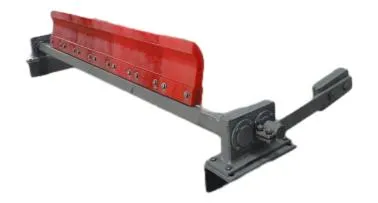 Afrikaans
Afrikaans  Albanian
Albanian  Amharic
Amharic  Arabic
Arabic  Armenian
Armenian  Azerbaijani
Azerbaijani  Basque
Basque  Belarusian
Belarusian  Bengali
Bengali  Bosnian
Bosnian  Bulgarian
Bulgarian  Catalan
Catalan  Cebuano
Cebuano  Corsican
Corsican  Croatian
Croatian  Czech
Czech  Danish
Danish  Dutch
Dutch  English
English  Esperanto
Esperanto  Estonian
Estonian  Finnish
Finnish  French
French  Frisian
Frisian  Galician
Galician  Georgian
Georgian  German
German  Greek
Greek  Gujarati
Gujarati  Haitian Creole
Haitian Creole  hausa
hausa  hawaiian
hawaiian  Hebrew
Hebrew  Hindi
Hindi  Miao
Miao  Hungarian
Hungarian  Icelandic
Icelandic  igbo
igbo  Indonesian
Indonesian  irish
irish  Italian
Italian  Japanese
Japanese  Javanese
Javanese  Kannada
Kannada  kazakh
kazakh  Khmer
Khmer  Rwandese
Rwandese  Korean
Korean  Kurdish
Kurdish  Kyrgyz
Kyrgyz  Lao
Lao  Latin
Latin  Latvian
Latvian  Lithuanian
Lithuanian  Luxembourgish
Luxembourgish  Macedonian
Macedonian  Malgashi
Malgashi  Malay
Malay  Malayalam
Malayalam  Maltese
Maltese  Maori
Maori  Marathi
Marathi  Mongolian
Mongolian  Myanmar
Myanmar  Nepali
Nepali  Norwegian
Norwegian  Norwegian
Norwegian  Occitan
Occitan  Pashto
Pashto  Persian
Persian  Polish
Polish  Portuguese
Portuguese  Punjabi
Punjabi  Romanian
Romanian  Russian
Russian  Samoan
Samoan  Scottish Gaelic
Scottish Gaelic  Serbian
Serbian  Sesotho
Sesotho  Shona
Shona  Sindhi
Sindhi  Sinhala
Sinhala  Slovak
Slovak  Slovenian
Slovenian  Somali
Somali  Spanish
Spanish  Sundanese
Sundanese  Swahili
Swahili  Swedish
Swedish  Tagalog
Tagalog  Tajik
Tajik  Tamil
Tamil  Tatar
Tatar  Telugu
Telugu  Thai
Thai  Turkish
Turkish  Turkmen
Turkmen  Ukrainian
Ukrainian  Urdu
Urdu  Uighur
Uighur  Uzbek
Uzbek  Vietnamese
Vietnamese  Welsh
Welsh  Bantu
Bantu  Yiddish
Yiddish  Yoruba
Yoruba  Zulu
Zulu Components and Structure of Conveyor Frame Systems for Efficient Material Handling
Understanding Conveyor Frame Parts A Key Component in Material Handling
Conveyor systems are essential in various industries, facilitating the movement of materials and products from one location to another. At the heart of these systems lies the conveyor frame, an often overlooked yet critical component. The frame provides the structural integrity and support needed for the conveyor system to function efficiently. This article aims to delve into the world of conveyor frame parts, exploring their significance, types, and maintenance.
The Importance of Conveyor Frames
The primary role of the conveyor frame is to house and support essential components such as the belt, pulleys, motors, and rollers. A well-designed frame ensures that the system operates smoothly, maintaining alignment and stability throughout its use. Additionally, the frame needs to accommodate various load capacities and routing configurations, which is why its design and material selection are vital in industrial applications.
A strong and reliable frame contributes significantly to the overall productivity of a conveyor system. If a frame is poorly constructed or made from inferior materials, it may bend, warp, or break under pressure, leading to downtime and increased maintenance costs. Therefore, selecting the right frame components is paramount to ensuring longevity and efficiency.
Types of Conveyor Frame Parts
Conveyor frames can be constructed from various materials, including steel, aluminum, and plastic. Each material has its unique properties that suit different applications
1. Steel Frames Known for their strength and durability, steel frames are commonly used in heavy-duty applications where high loads are required. However, they are also heavier, which may not be suitable for all situations, particularly where mobility is essential.
2. Aluminum Frames Aluminum is lightweight and corrosion-resistant, making it ideal for applications requiring transportability and flexibility. Aluminum frames are easy to assemble and disassemble, enabling quick adjustments and modifications.
3. Plastic Frames These are particularly useful in environments such as food processing, where corrosion and hygiene are concerns. Plastic frames are often easier to clean and maintain and can withstand certain chemicals.
Beyond frame materials, other essential components include
- Support Legs These provide stability to the conveyor frame, allowing for height adjustments based on operational requirements
.conveyor frame parts

- Cross Members Installed horizontally to connect the uprights, cross members add strength and rigidity to the frame structure.
- Mounting Plates Used to secure motors and other elements, these plates must be accurately aligned to ensure proper functioning.
Maintenance of Conveyor Frame Parts
To ensure optimal performance of conveyor frame parts, regular maintenance is crucial. Here are some key maintenance practices
1. Inspection Periodically check for signs of wear, corrosion, or damage. Early detection can help prevent larger issues down the road.
2. Cleaning Keeping the frame and attached components clean helps avoid material buildup that could impede performance.
3. Lubrication Apply lubricant to moving parts as necessary to ensure smooth operation and reduce friction.
4. Tightening Bolts Regularly check and tighten bolts and fasteners to maintain structural integrity and prevent vibrations that may lead to loosened parts.
5. Alignment Checks Ensuring that all components are correctly aligned helps to distribute loads evenly and prevents undue stress on any single part.
Conclusion
Conveyor frame parts are critical to the success of any material handling system. Understanding their types, functions, and maintenance needs is essential for operators in ensuring efficiency, safety, and longevity. Whether in a manufacturing plant, warehouse, or distribution center, selecting the proper conveyor frame components can enhance productivity and reduce operational costs. Investing time and resources into understanding and maintaining these components is vital for any business reliant on effective material handling solutions. Emphasizing the importance of each part ensures that conveyor systems remain on the cutting edge of operational efficiency, driving industries forward in increasingly competitive environments.
-
Revolutionizing Conveyor Reliability with Advanced Rubber Lagging PulleysNewsJul.22,2025
-
Powering Precision and Durability with Expert Manufacturers of Conveyor ComponentsNewsJul.22,2025
-
Optimizing Conveyor Systems with Advanced Conveyor AccessoriesNewsJul.22,2025
-
Maximize Conveyor Efficiency with Quality Conveyor Idler PulleysNewsJul.22,2025
-
Future-Proof Your Conveyor System with High-Performance Polyurethane RollerNewsJul.22,2025
-
Driving Efficiency Forward with Quality Idlers and RollersNewsJul.22,2025





























